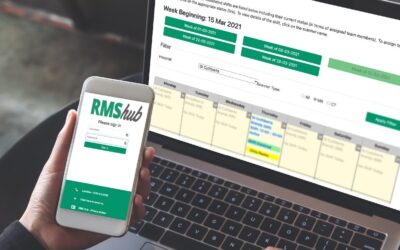
Radiology Management Solutions (RMS) has extended its reporting portfolio with the addition of comprehensive DXA reporting for NHS Trusts, in line with new quality standards from the Royal Osteoporosis society.
Dual Energy X-Ray Absorptiometry (DXA) is the established standard method of measuring bone mineral density (BMD). It is a low radiation dose examination used to help diagnose bone conditions such as low bone mass and osteoporosis. Importantly, it is recognised for its value in the diagnostic pathway of patients at risk of fracture.
It is estimated that more than three million people in the UK have osteoporosis and it causes around five hundred thousand osteoporotic fractures every year. The Royal Osteoporosis Society describes Osteoporosis as ‘a condition that causes bones to lose their strength and become more likely to break. It can develop slowly over years and the first sign of the disease may be when an apparently minor injury results in a fracture, most commonly in the wrist, hip or spine’.
DXA Reporting Radiographer Joy Thorpe comments ‘DXA scans often get put to the bottom of the pile in a radiology department -with CT, MR and plain film reporting taking priority due to government targets and fines for missed quotas. Additionally, a DXA scan is often required for oncology patients to provide a baseline measurement ahead of treatment. As such, it is imperative that reporting on DXA scans is completed quickly and efficiently within Trusts.”
NHS England found that there were 34,000 patients waiting for a DXA scan in June 2019. However, this number falls within the operational standard that less than 1% of patients should wait six weeks or more from referral for a diagnostic test. The issue for Trusts is reporting on the DXA scans in a timely manner.
The Royal Osteoporosis Society recently released guidelines for DXA reporting in adults, which recommends that the DXA scan report is issued within three weeks of the scan and should contain sufficient detail to enable optimal management by a non-specialist referrer, such as a GP. The Society has produced a DXA reporting checklist and a standardised report format to assist in thorough and clear reporting. This marks a change and improvement in DXA reporting techniques, which previously may have been a simple T-score reading to detect bone density issues.
RMS Clinical Director William Bailey commented “The new guidelines for reporting DXA scans should ensure that patients with suspected osteoporosis get a faster diagnosis and a more comprehensive report. Although just guidelines, we hope that Trusts will adopt the new DXA reporting standards and start implementing the recommendations. Our dedicated DXA team provide detailed reports and can help NHS Trusts reduce reporting backlogs.”
RMS’s DXA reporting service will work in consultation with an NHS Trust to offer advice and guidance on setting up and running a DXA reporting department, as well as staff training. The quality-assured DXA reports are completed in a standardised format according to DXA reporting protocols and include fracture risk assessment and rates of change in serial BMD measurements as well as commentary on the reliability of measurements.
This service complements RMS’s radiology and reporting solutions, which include opening up an existing radiology department for up to 18 hours a day to reduce scanning waiting times, as well as plain film xray reporting.






